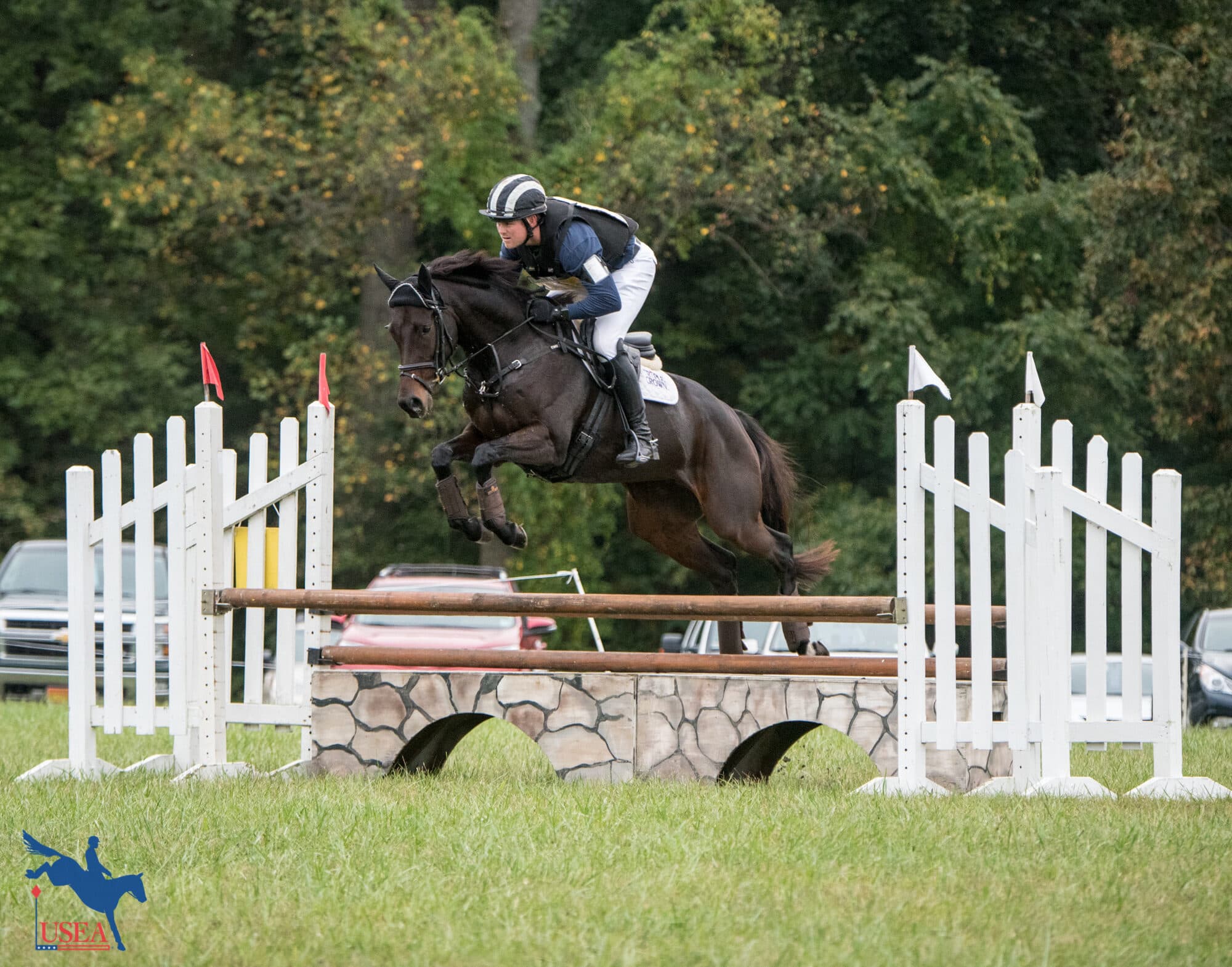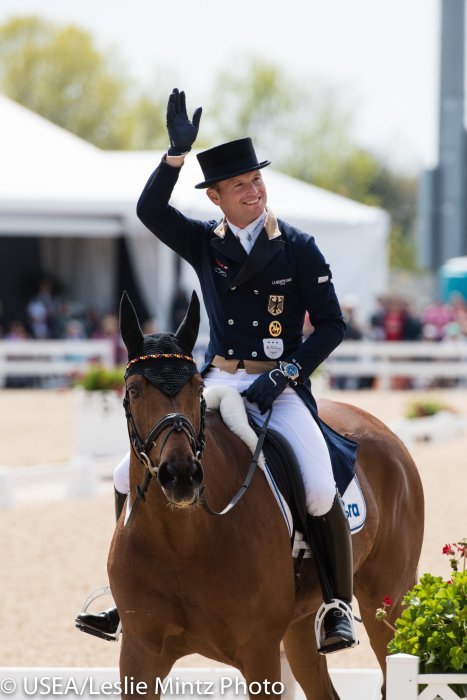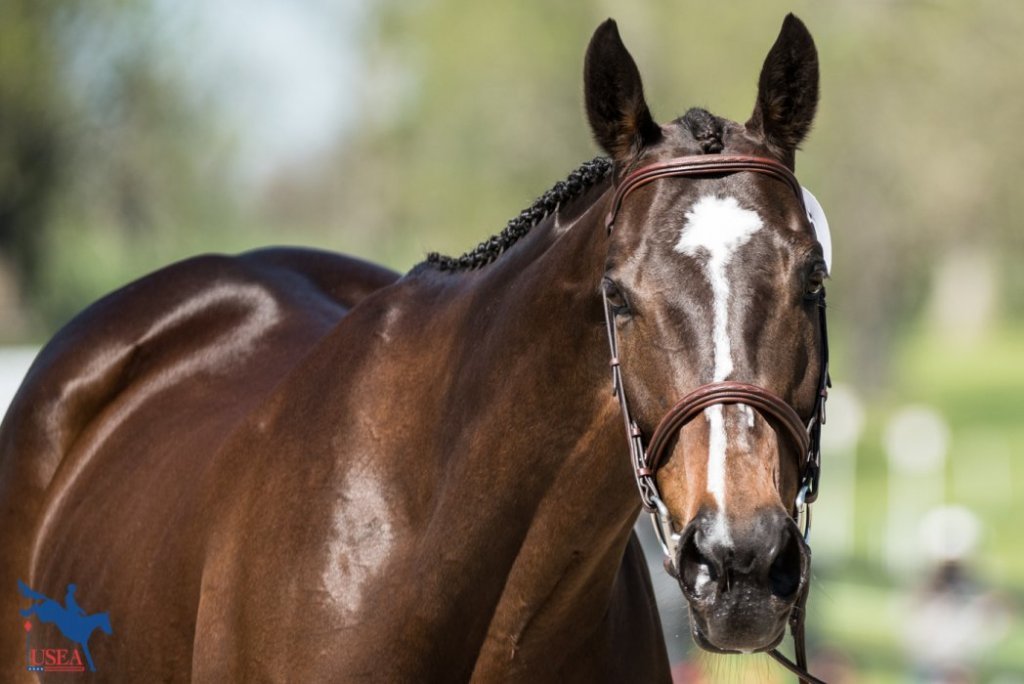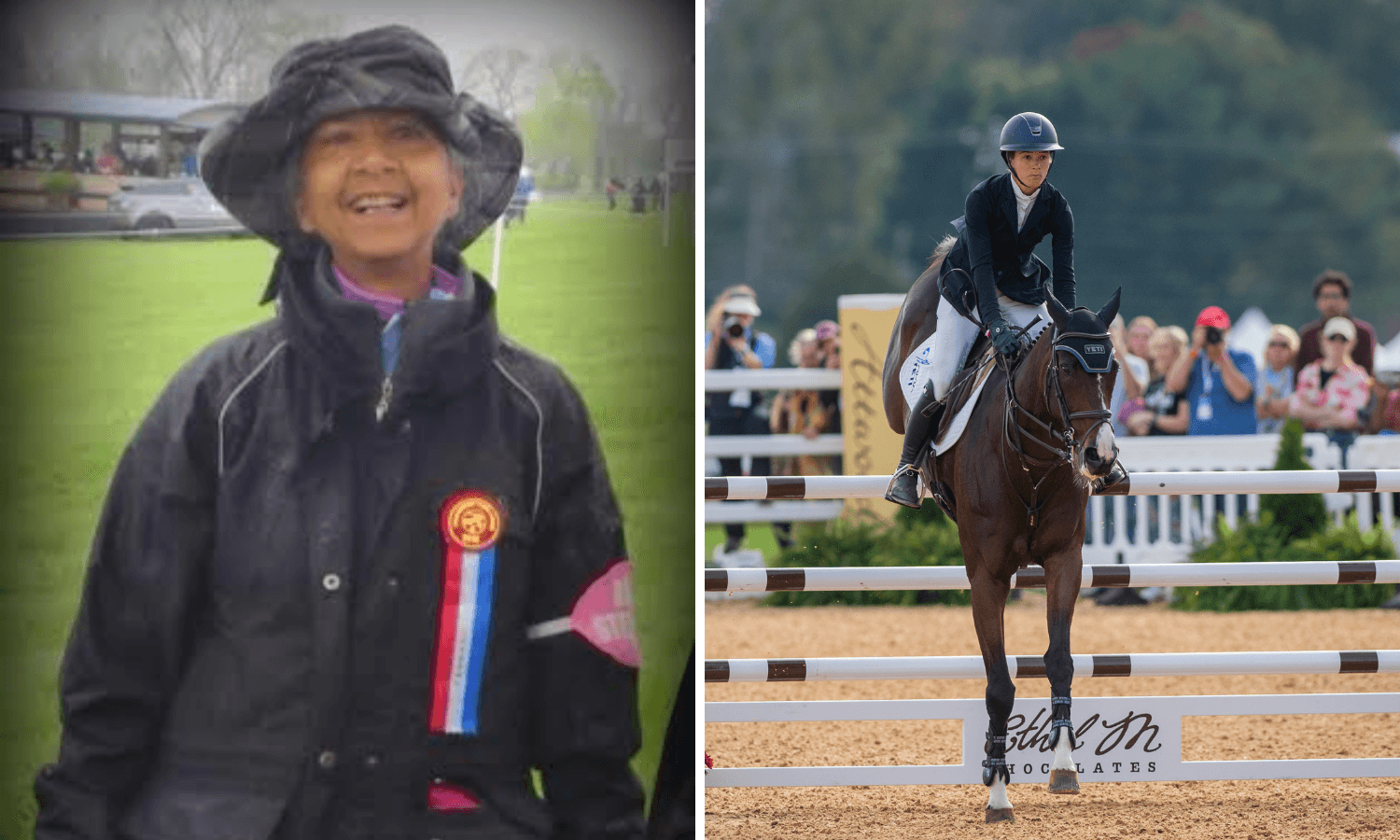Zero to One Hundred: Thoroughbred Blood in a Young Event Horse

“The perfect marriage of form and flight” is how Anna Hillenbrand describes the Thoroughbred in her Seabiscuit biography. As soon as you think the gas tank is empty, that’s when the Thoroughbred shines, pushing through until the very end. It’s evident the speed, the stamina, the brain, the strength, and the heart of a Thoroughbred are promising qualities to have in a potential event horse.
An expert in the field, Chris Ryan is a championship judge and commentator, one of the most respected huntsmen in Ireland, a foundation selector of the Goresbridge Go for Gold elite event horse sale, and has sourced an abundance of upper level event horses including Gina Miles’ Olympic individual silver medal partner, McKinlaigh. The USEA has tapped into Ryan’s knowledge by utilizing him as a featured panelist at the USEA Young Horse Symposium in Ocala, Florida for the last two years. He also served as one of the USEA Future Event Horse (FEH) Championship judges in 2017 and will be the conformation judge at the 2018 USEA Young Event Horse (YEH) Championships on both coasts.
The USEA had the opportunity to interview Ryan on the benefits of Thoroughbred blood, and he provided some valuable insights.
Look at Michael Jung, who has undoubtedly made eventing history with his long list of victories including World Champion, European Champion, Olympic gold medalist, Rolex Grand Slam winner, consecutive winner of the Rolex Kentucky Three-Day Event for three years in a row, and the list goes on. His historical records have been made possible by a string of talented horses including FischerRocana FST, FischerTakinou, and La Biosthetique Sam FBW, the only horse in eventing history to carry Olympic, World, and European championship titles at the same time.

When it comes to Thoroughbred blood, FischerRocana FST has 64 percent, FischerTakinou has 83 percent, and La Biosthetique Sam FBW has 76 percent. Notice a trend? Chris Ryan certainly did. All three winning horses have over fifty percent Thoroughbred blood in their pedigrees. Although, Ryan describes FischerRocana as a rarity among successful four-star event horses. To find out why, read the USEA’s interview on Thoroughbred blood with Ryan below.
USEA: How does the percentage of Thoroughbred blood influence these top horses’ performance?
Ryan: “A horse must be able to travel within his stamina reserve to jump safely and efficiently. We have seen the ground conditions at championships like the last World Equestrian Games in Normandy and the senior Europeans at Blair Castle deteriorate with massive rainfall. [Kentucky] has also seen heavy ground conditions. The Thoroughbred blood shows in the ability of the horse to carry the rider with ease past the 8-, 9-, and 10-minute mark, no matter the ground conditions”
USEA: What’s an ideal amount of Thoroughbred blood and why?
Ryan: “I would aim for at least 75 percent Thoroughbred blood. Genetic diversity has given every individual horse his own Thoroughbred percentage. For me, FischerRocana is a bit of an enigma as her Thoroughbred blood quotient is below what I would consider necessary for a four-star horse. One of the top international riders in the world came horse shopping in Ireland over the winter, and he would not look at any horse who was less than a three-quarter bred. God and genetics have given [the Thoroughbred] a heart to lung ratio to die for. I note the Thoroughbred can look into the distance. His horizon can be way out there. I see horses which lack Thoroughbred influence can have their horizon right in front of their nose. Also, the Thoroughbred’s reaction time is amazing.”
USEA: Any difference between an American verse European Thoroughbred?
Ryan: “For me a Thoroughbred is a Thoroughbred. I don’t differentiate between an American or an Irish Thoroughbred. I prefer sires or dam sires of staying Thoroughbreds (i.e. who ran over 1.5 miles+). Historically, this blood has helped produce the best Irish horses.”

USEA: What are your thoughts on cross breeds?
Ryan: “Cross breeds, like the great Lenamore, a traditional Irish-bred, winner of Burghley at 18 years of age, are exceptional. There is no doubt that the Irish Draught carries way more Thoroughbred blood in his pedigree than most realize. The Trakhener and Anglo Arab can carry any amount of Thoroughbred blood and the stud books are such a mix of part breeding the Thoroughbred percentage can be overlooked. So, a horse that is 100 percent Hanoverian, Holsteiner, or Irish Sport Horse can carry a different amount of Thoroughbred blood. I find ‘the Hybrid’ or cross bred can bring the best of both breeds together. The Thoroughbred is renowned as the best ‘breed improver’. The Thoroughbred, in particular, the great four Thoroughbred stallions: Rantzau, Cottage Son, Lucky Boy, and Ladykiller, turned the continental carriage and harness horse into a performance sport horse.”
USEA: Are there any cons of having an event horse with 100 percent blood (full Thoroughbred)?
Ryan: “Some Thoroughbred horses are inclined to jump slightly hollow (inverted) and a little on the forehand. A lack of front leg fold can also be common. Some Thoroughbred sires and dams show a prevalence of the points stated above.”
USEA: Have you seen any successful upper level event horses with no blood whatsoever?
Ryan: “No. I have not.”

USEA: What does your ideal YEH horse look like?
Ryan: “There is no doubt that the top horse can come in every shape and size, rather like the top event rider! However, I have come to certain conclusions which work for me: refinement, giving the impression of intelligence and the ability to learn, lightness and suppleness when in motion, a good eye and a good ear, good conformation, and lastly, a certain boldness and forward-thinking.”
Lastly, the USEA asked Ryan to rank the importance of specific qualities (e.g. brains, breeding, conformation.)
Ryan: “Trainability comes in as number one. Soundness through good conformation, refinement, athleticism, heart, courage, and a good jump technique are also on the top of my list.”
Whether your horse is Irish, Canadian, German, French, Dutch, New Zealand, or American, they are all in contingency to win a YEH competition on the basis they show event horse characteristics. To see which events will be hosting Young Event Horse classes this year, please follow the 2018 Young Event Horse Series Calendar.
About the USEA Young Event Horse Program
The Young Event Horse (YEH) Program was first established in 2004 as an eventing talent search. Much like similar programs in Europe, the YEH program was designed to identify young horses that possess the talent and disposition to, with proper training, excel at the uppermost levels of the sport. The ultimate goal of the program is to distinguish horses with the potential to compete at the three- and four-star levels, but many fine horses that excel at the lower levels are also showcased by the program.
The YEH program provides an opportunity for breeders and owners to exhibit the potential of their young horses while encouraging the breeding and development of top event horses for the future. The program rewards horses who are educated and prepared in a correct and progressive manner. At qualifying events, youngsters complete a dressage test and a jumping/galloping/general impression phase. At Championships, young horses are also evaluated on their conformation in addition to the dressage test and jumping/galloping/general impression phase. Click here to view the jumping standards and specifications.
The USEA would like to thank SmartPak, Standlee Hay Company, Professional’s Choice, and Merck Animal Health for sponsoring the Young Event Horse program.














